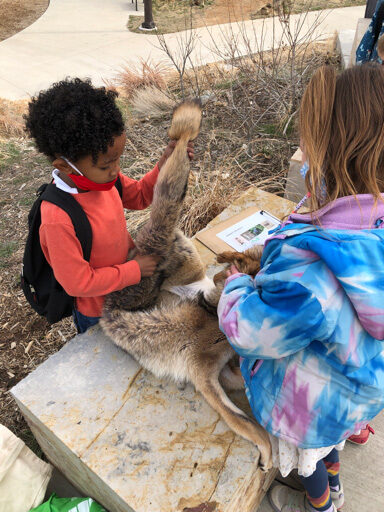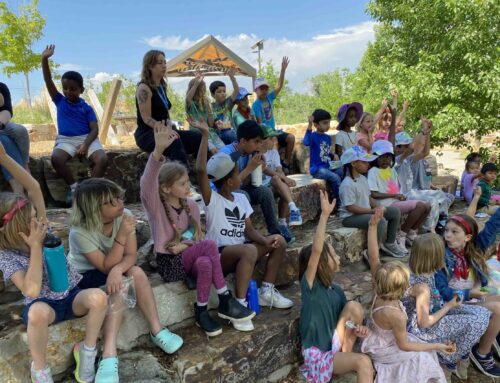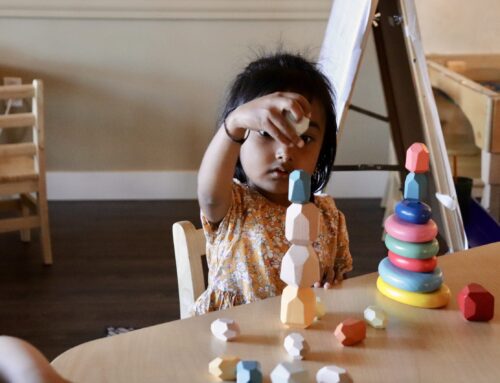Hello everyone!
I hope you are enjoying the sights, sounds, and smells of spring! The recent rain has made the grass much greener and the blossoms have come out. And living in such a place as Colorado, I try to take advantage of this, getting outside as much as possible. I wasn’t always this drawn to the natural world, but a few events in my life have illustrated to me the restorative power of the outdoors.

Almost thirty years ago, I arrived home from what was a seminal experience in my life. I had just completed a semester-long NOLS (National Outdoor Leadership School) course in the Patagonia region of southern Chile. This seventy-five day experience included backpacking, mountaineering, and sea kayaking in a relatively remote part of the world. I signed up for the course having never camped more than a night or two but convinced I was ready. And, though I faced several challenges, including running very low on food while out on a twelve-day expedition that was supposed to take seven days; hiking through a bamboo forest at a rate of two miles over twelve hours; and walking through pouring rain for days on end; somehow I found I was ready. Or, at least I became ready over the course of the seventy-five days.
As the time drew to a close, I found myself not wanting to leave my group. We had been through so much together, and I knew it would be hard for anyone else to comprehend fully the experiences we had had. And I had come to value, more than ever before, how wonderful it is to be fed, to be dry, and to be warm. When you spend much of your day focusing on that, there is little time for first-world problems.
My experience on my NOLS course is what first led me into education. My instructors were experts in the outdoors, knowing all of the ins and outs of ice climbing and sea kayaking. More importantly, though, they knew the value of a strong team and the importance of informed decision-making. And they knew that the best way to teach us was not simply to tell us information but rather to let us experience events and make decisions on our own. When my friends set up their tent low down on the beach despite having learned previously about finding tide lines, the instructors didn’t jump in to correct them. Instead, the tenters realized their error when they woke up to water lapping at their tent door. As long as we were not in an unsafe situation, our instructors let us experiment and learn from our mistakes.
Whenever we asked our instructors a question, the answer was invariably, “I don’t know. What do you think?” This answer frustrated us at the time: one of my friends, exasperated at this response, commented, “When I get home, my parents are going to ask how my trip was, and I’ll say, ‘I don’t know. What do you think?” But this response helped push us to find our own solutions, to really have to think about what would be best, rather than simply be told what to do.
My first year teaching, I was leading a discussion of the novel Johnny Tremain. A student asked me a question about why Johnny had said something. I began to answer her, but I stopped myself, remembering the wisdom of my NOLS instructors. “I don’t know,” I replied. “What do you think?” And, just as I’d hoped, this question led the class into an intense and in-depth discussion. The best part about it? The students weren’t trying to find the “right” answer from me. My simple redirected question showed them that their ideas were equally as valid as mine, and this opened the door to them all to contribute.
My NOLS experience showed me what a fantastic classroom the outdoors could be. We were faced with real challenges that we had to overcome, not for a grade or comment, but in order to reach our destination or to set up a safe campsite. We had to work on not only the “hard” skills of kayaking and climbing but also the “soft” skills of communication and teamwork.

At Compositive Primary, we strongly believe in the importance of teaching those skills (I don’t believe they are “soft” at all, in fact!) and in finding opportunities for students to ask questions and to challenge themselves in new ways. This happens in the classroom, but we also value the outdoors, taking students to Sand Creek to explore the natural world. As our students grow, I’m excited to venture farther afield – our state has so much to offer! In the meantime, I encourage you to take time with your kiddos in the outdoors – go on a bike ride, a hike, or even simply a walk around the neighborhood. And when your child asks you a question about something in the natural world, stop yourself from answering immediately. Instead, pause for a moment, and then reply, “I don’t know. What do you think?”
Take care,
Heather







